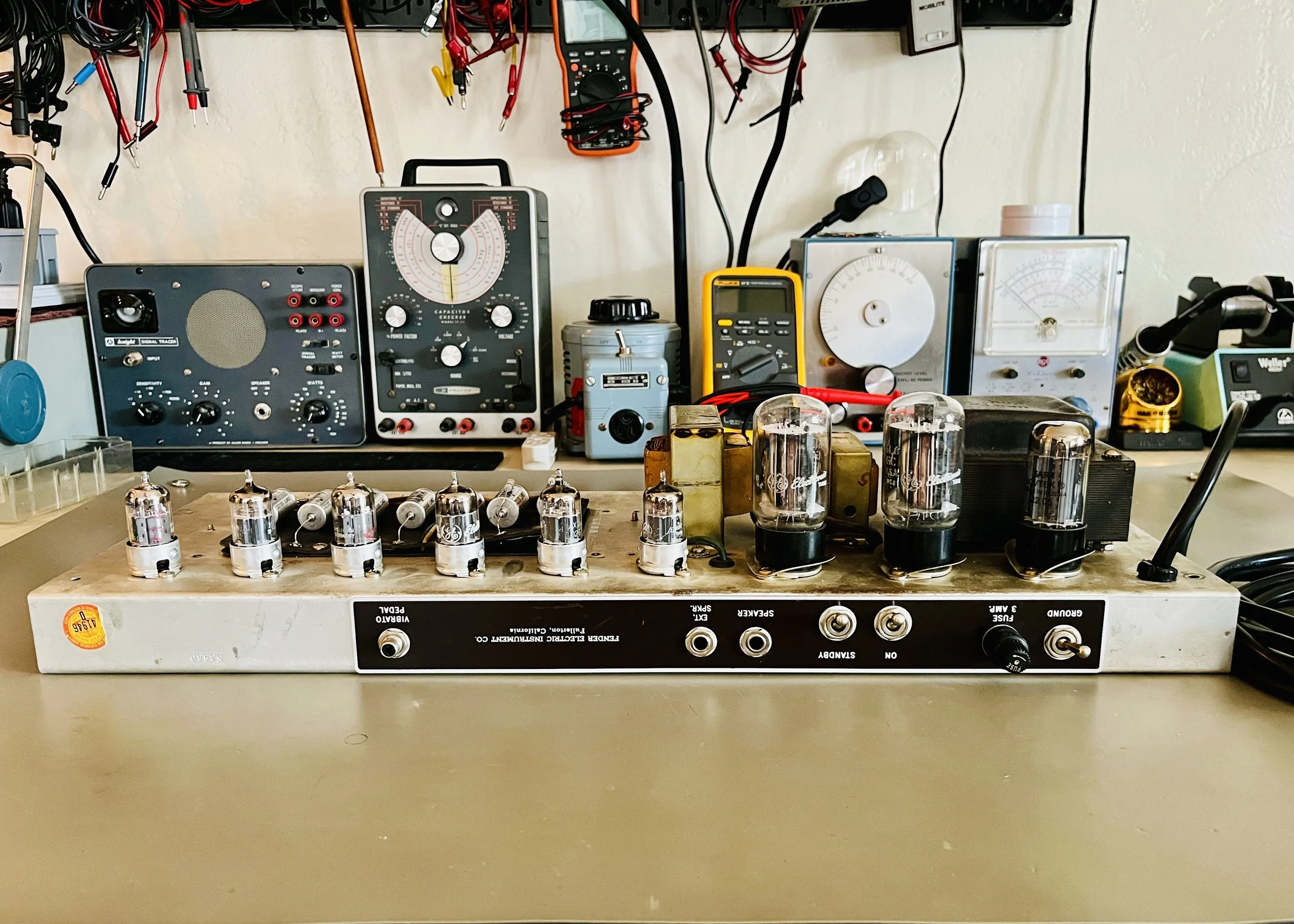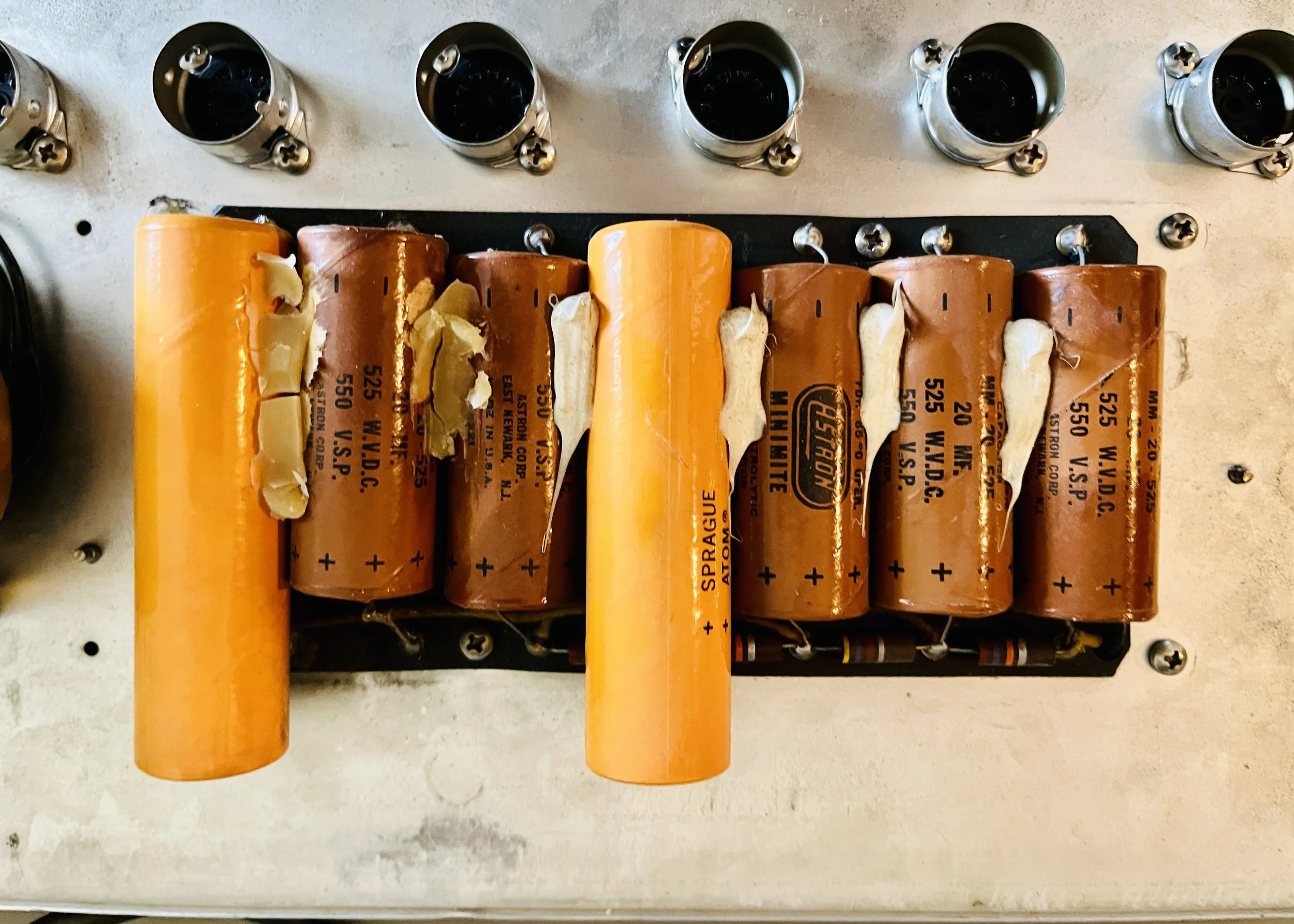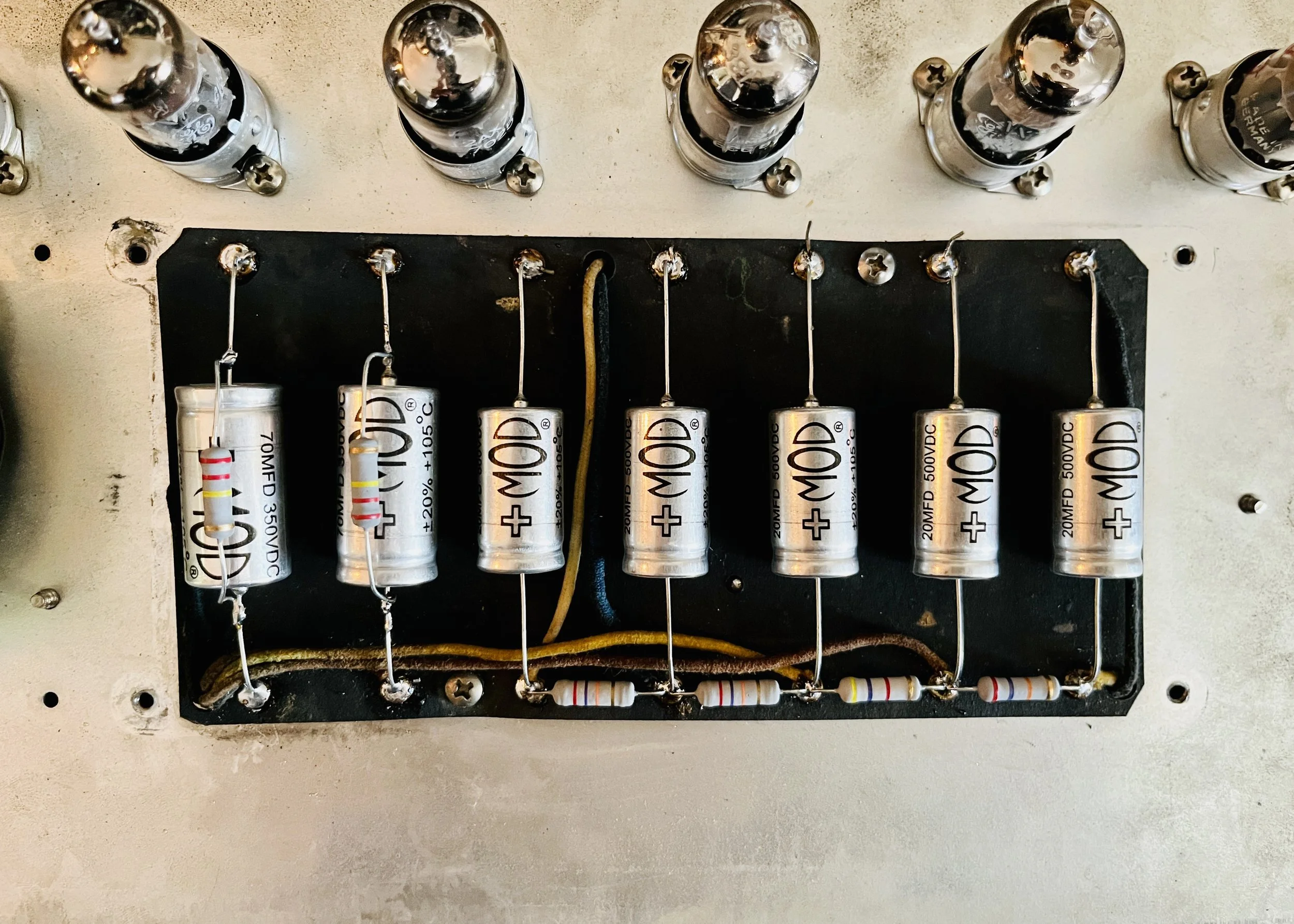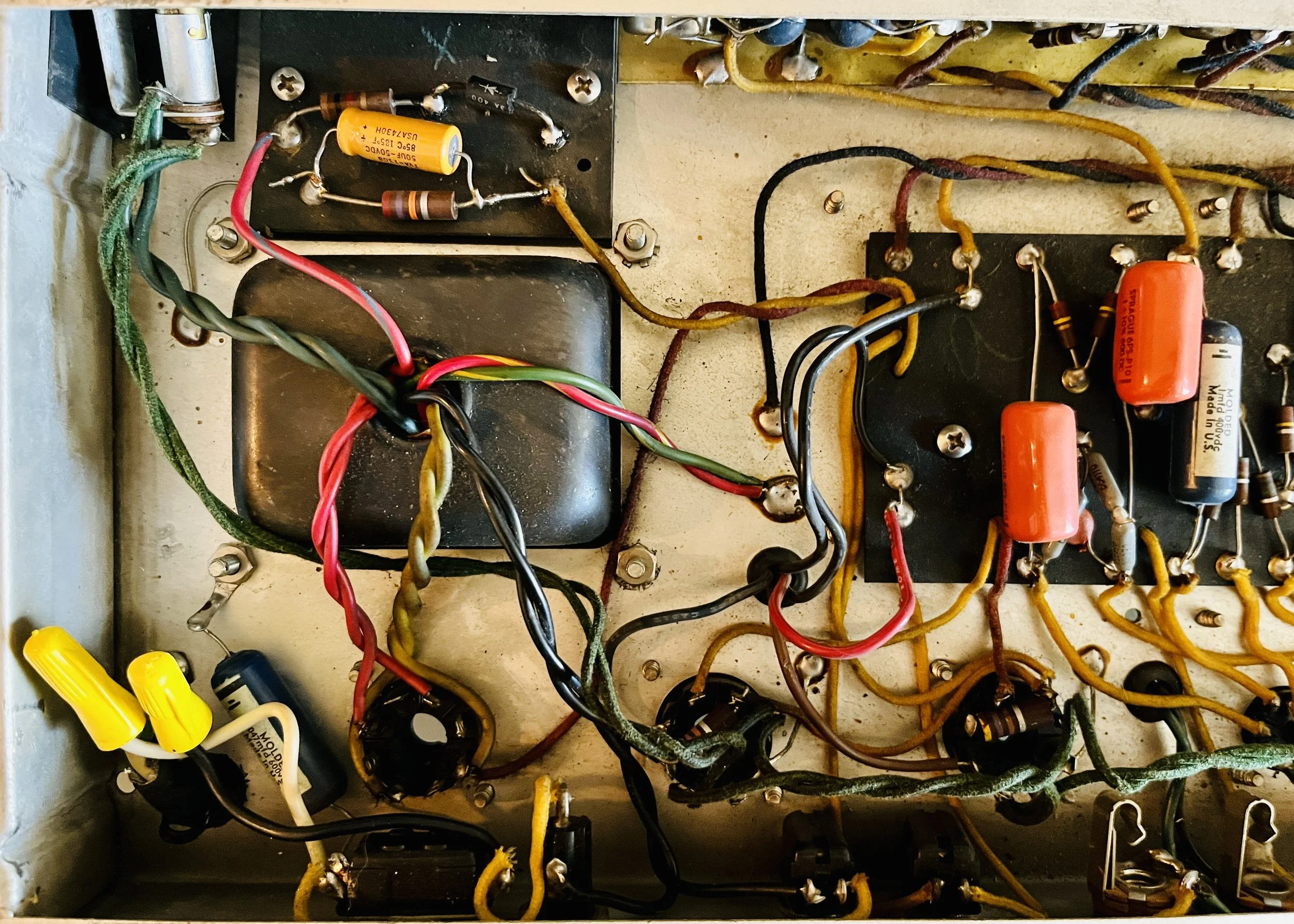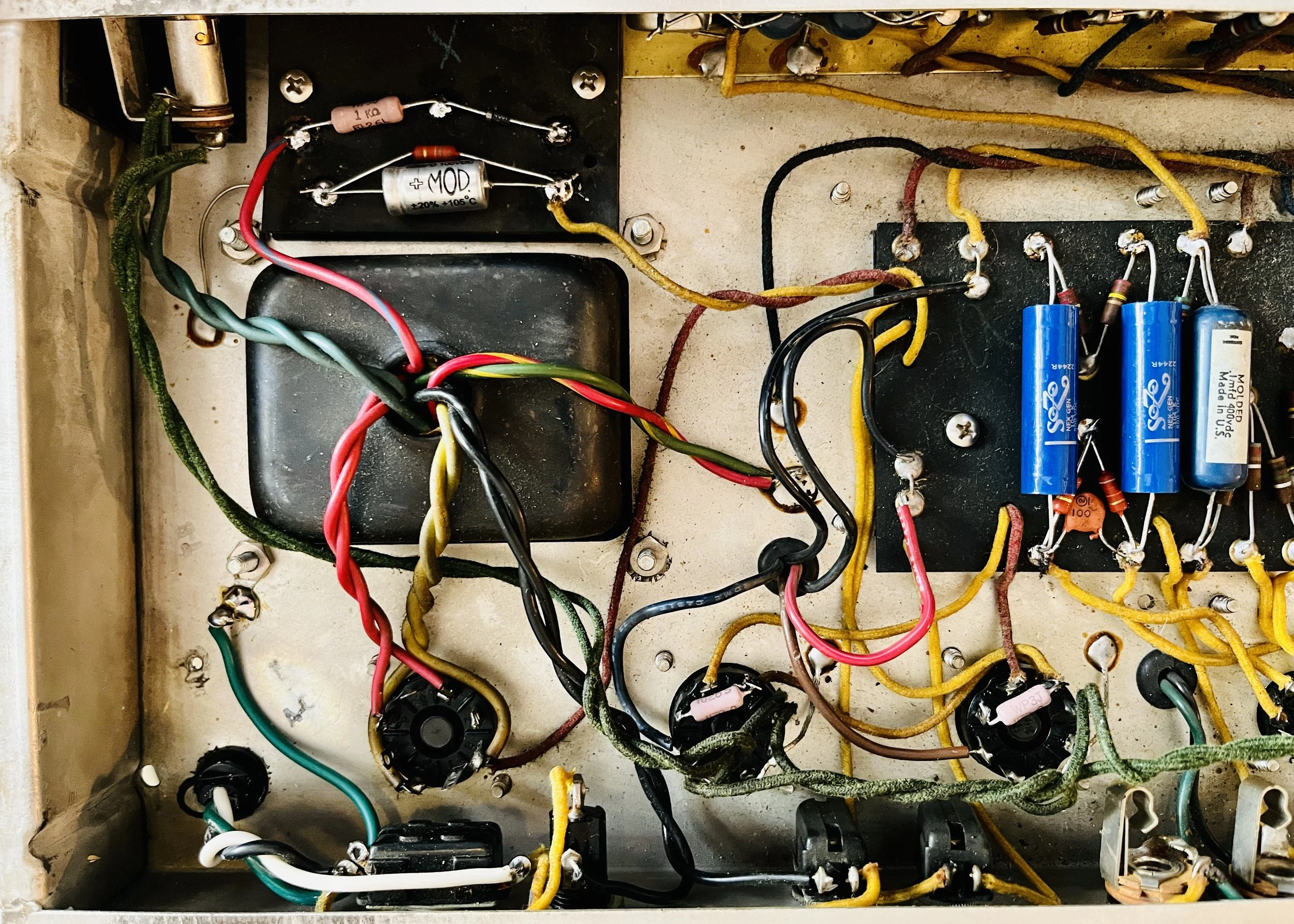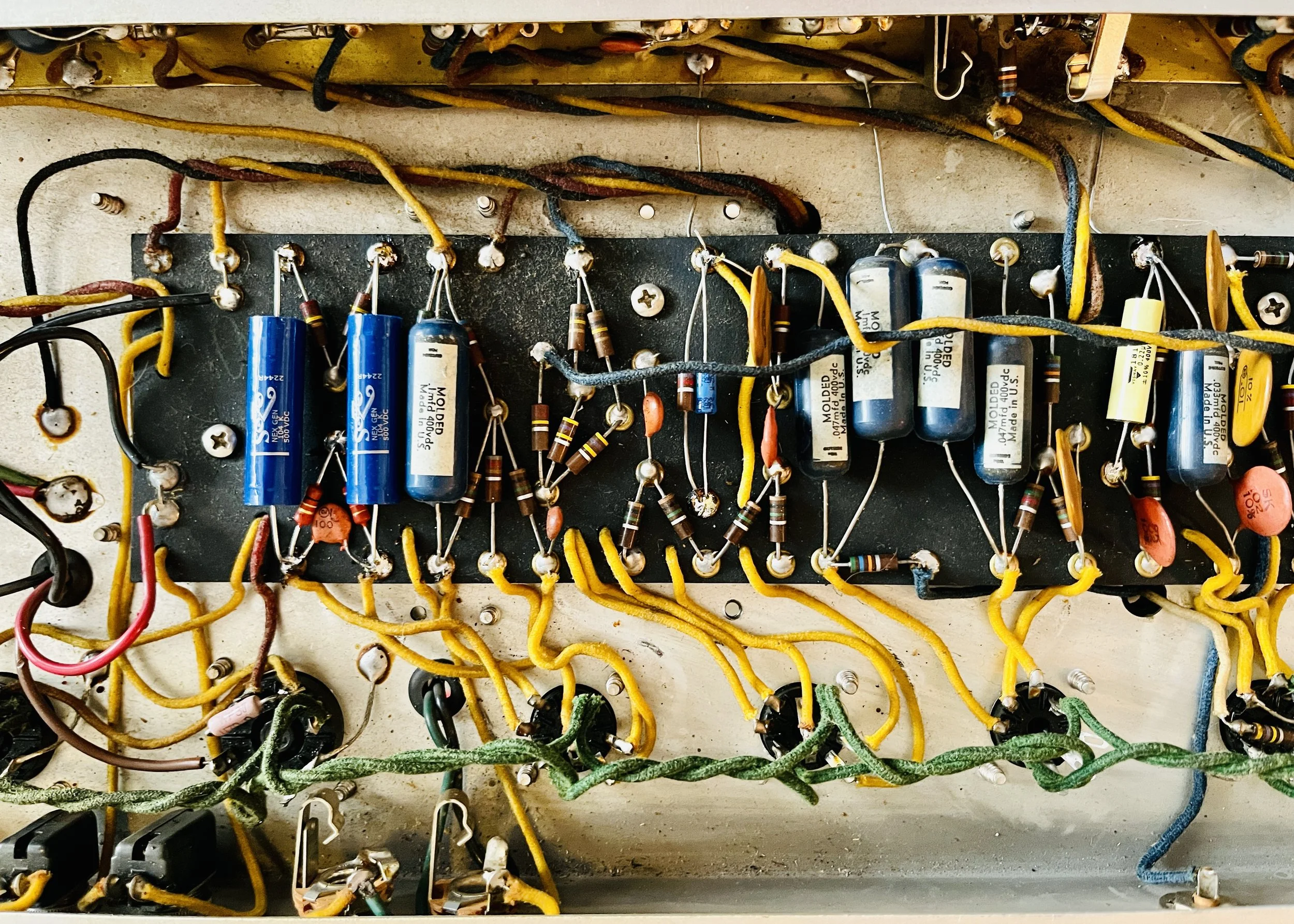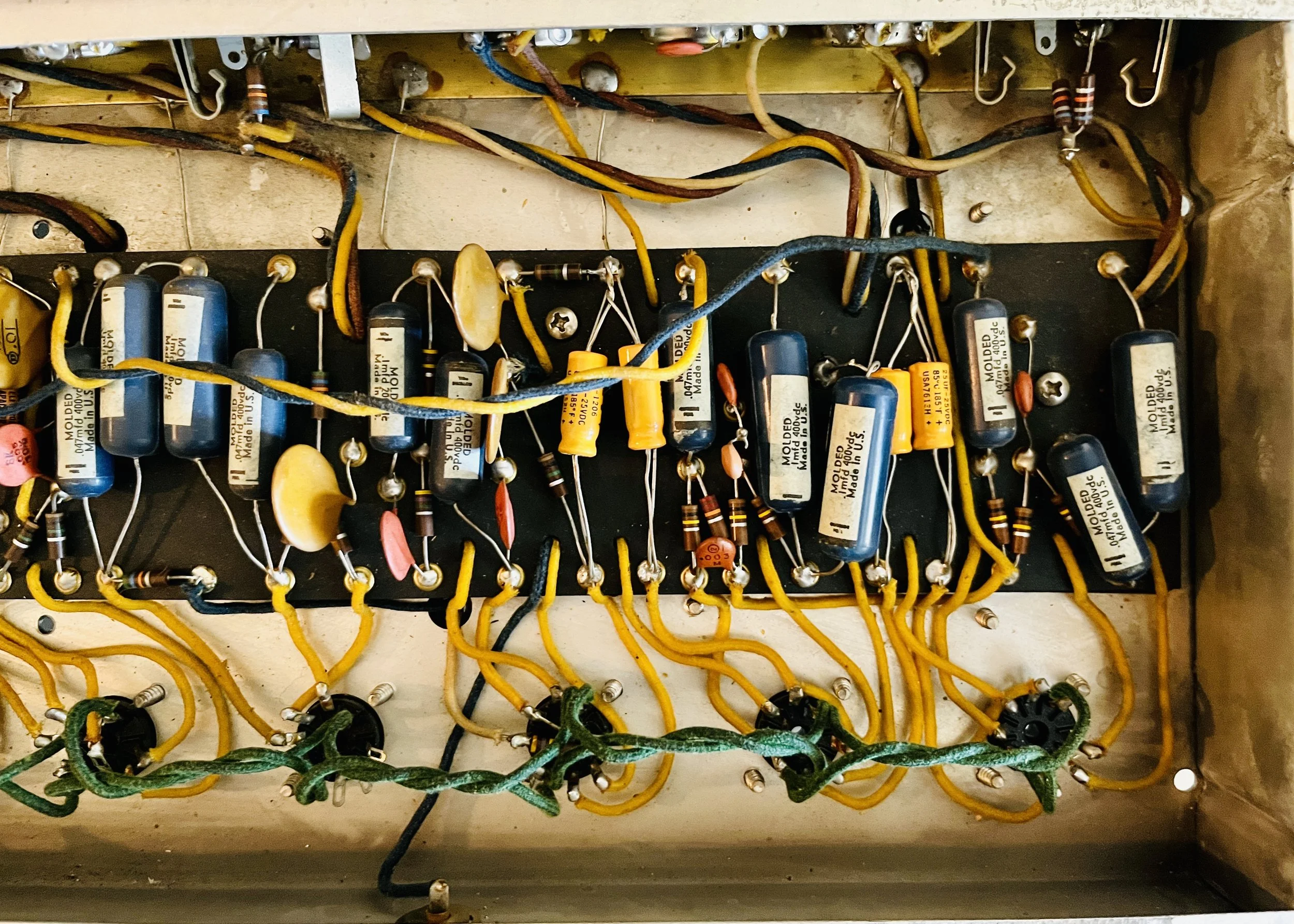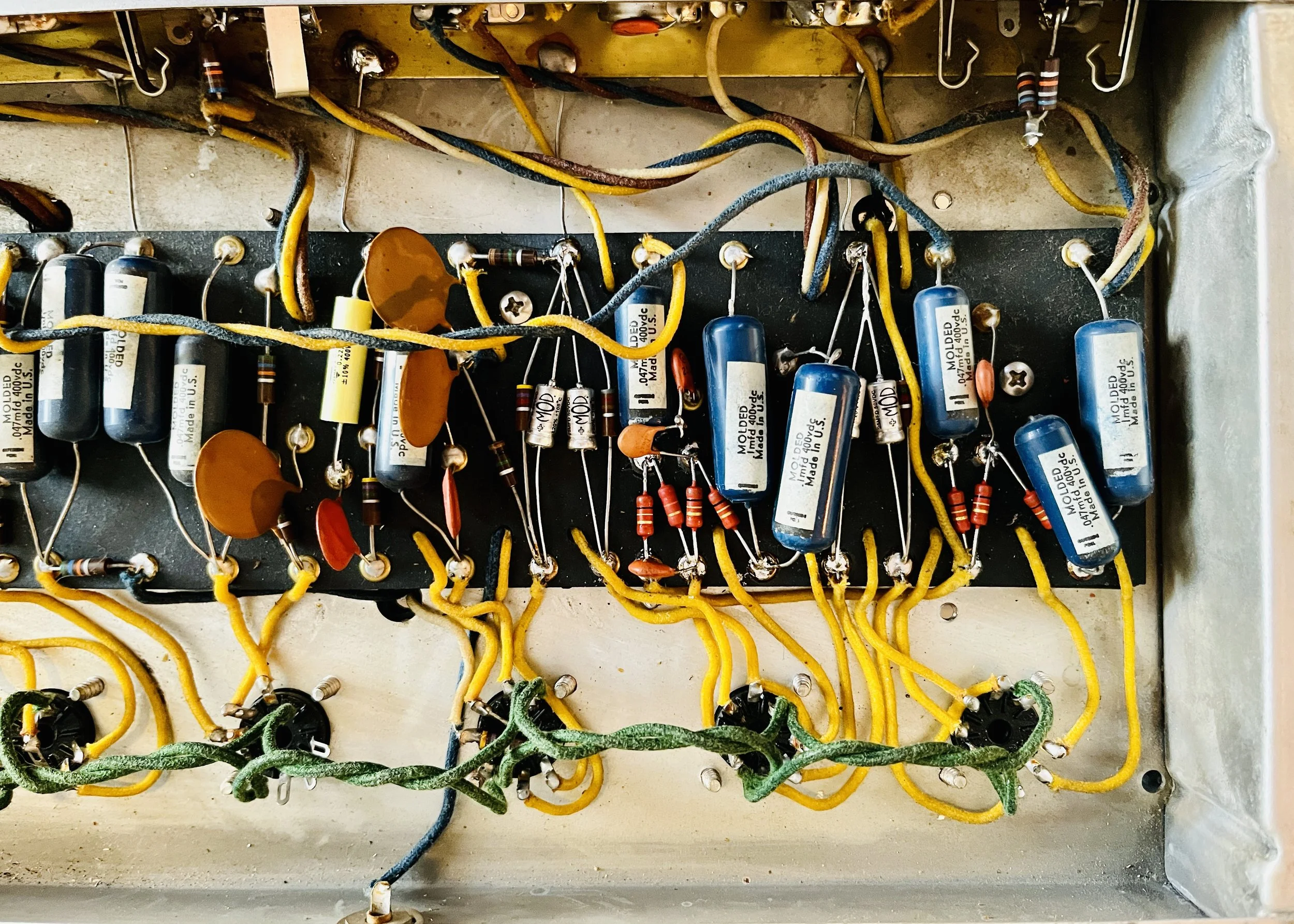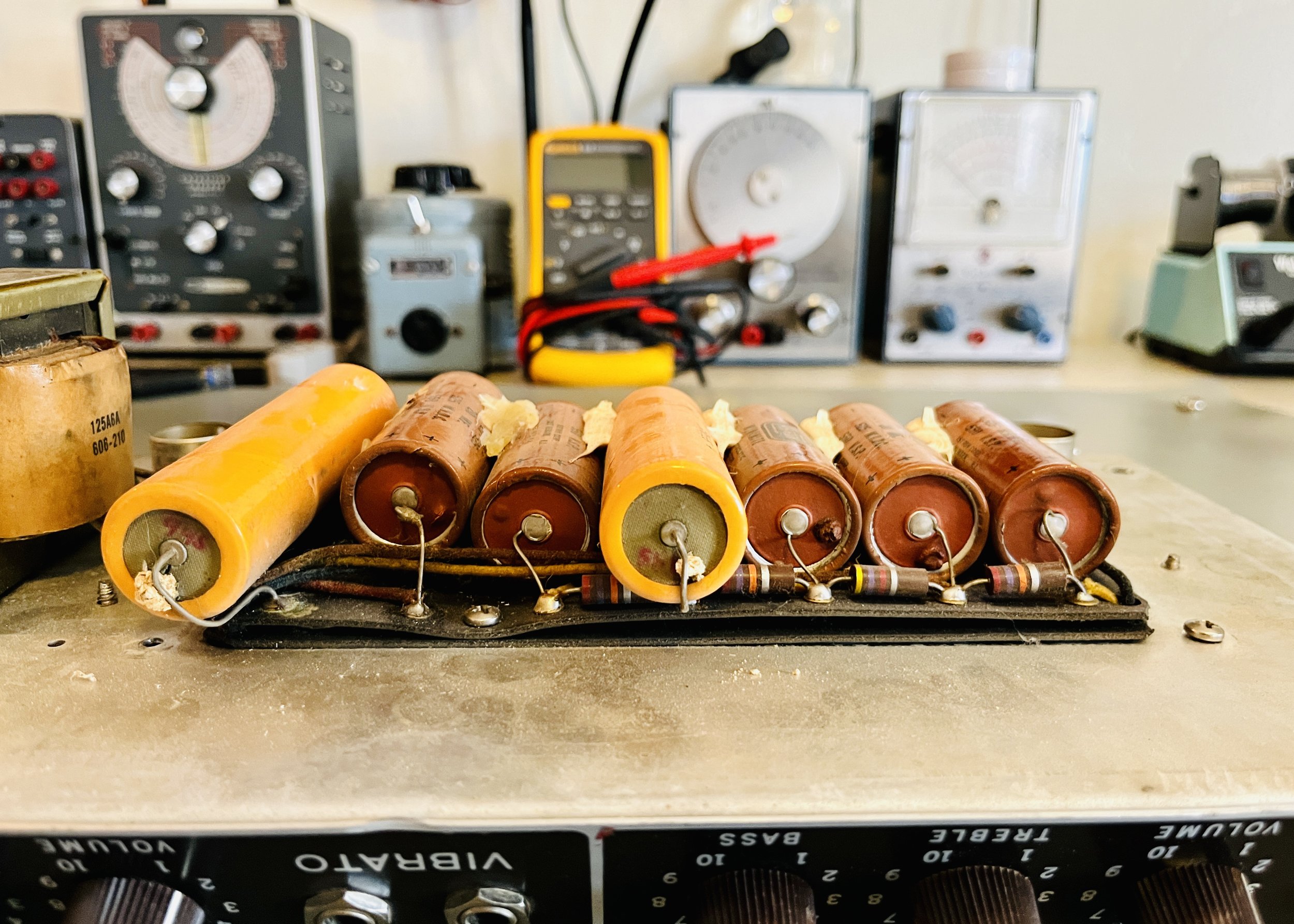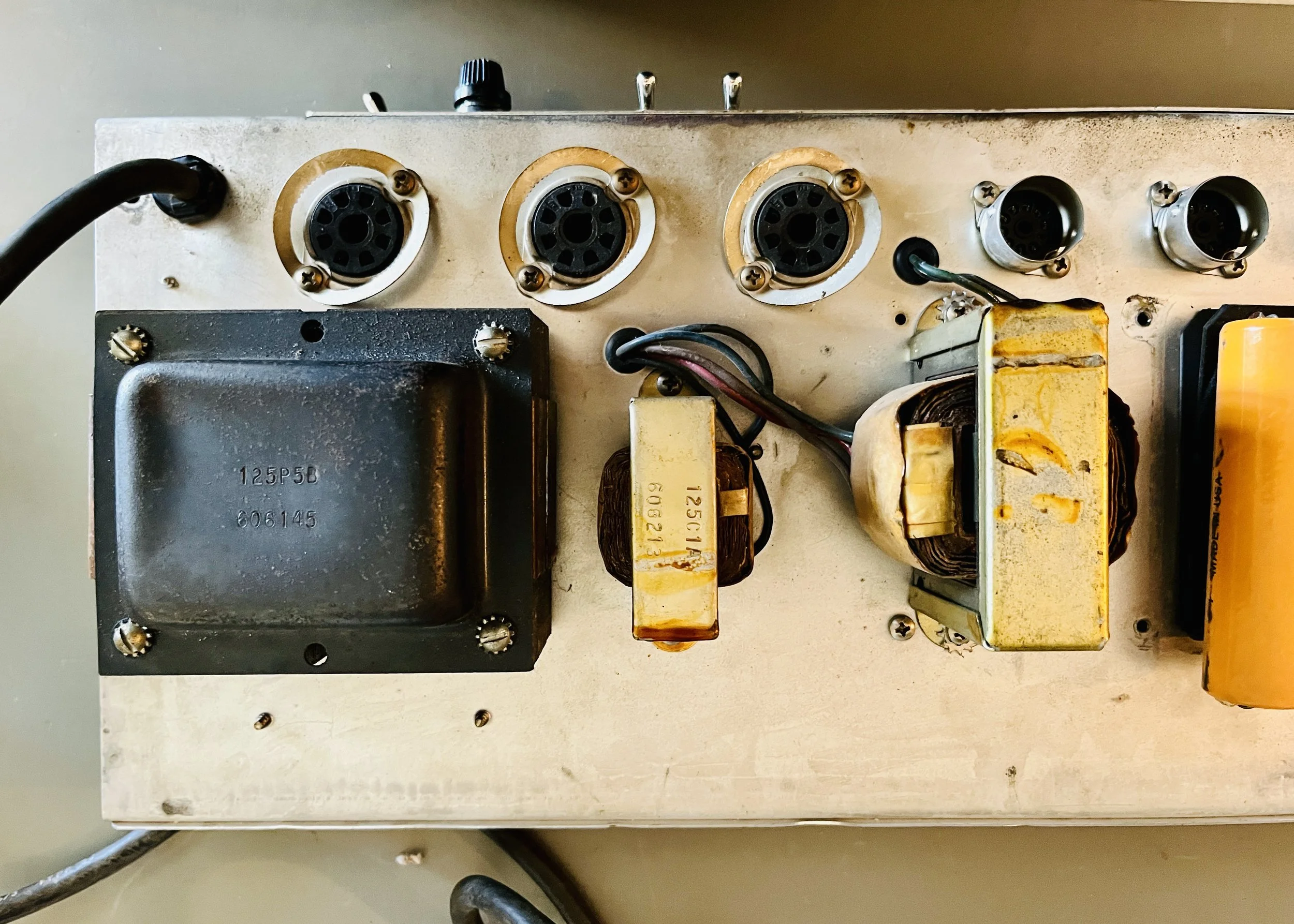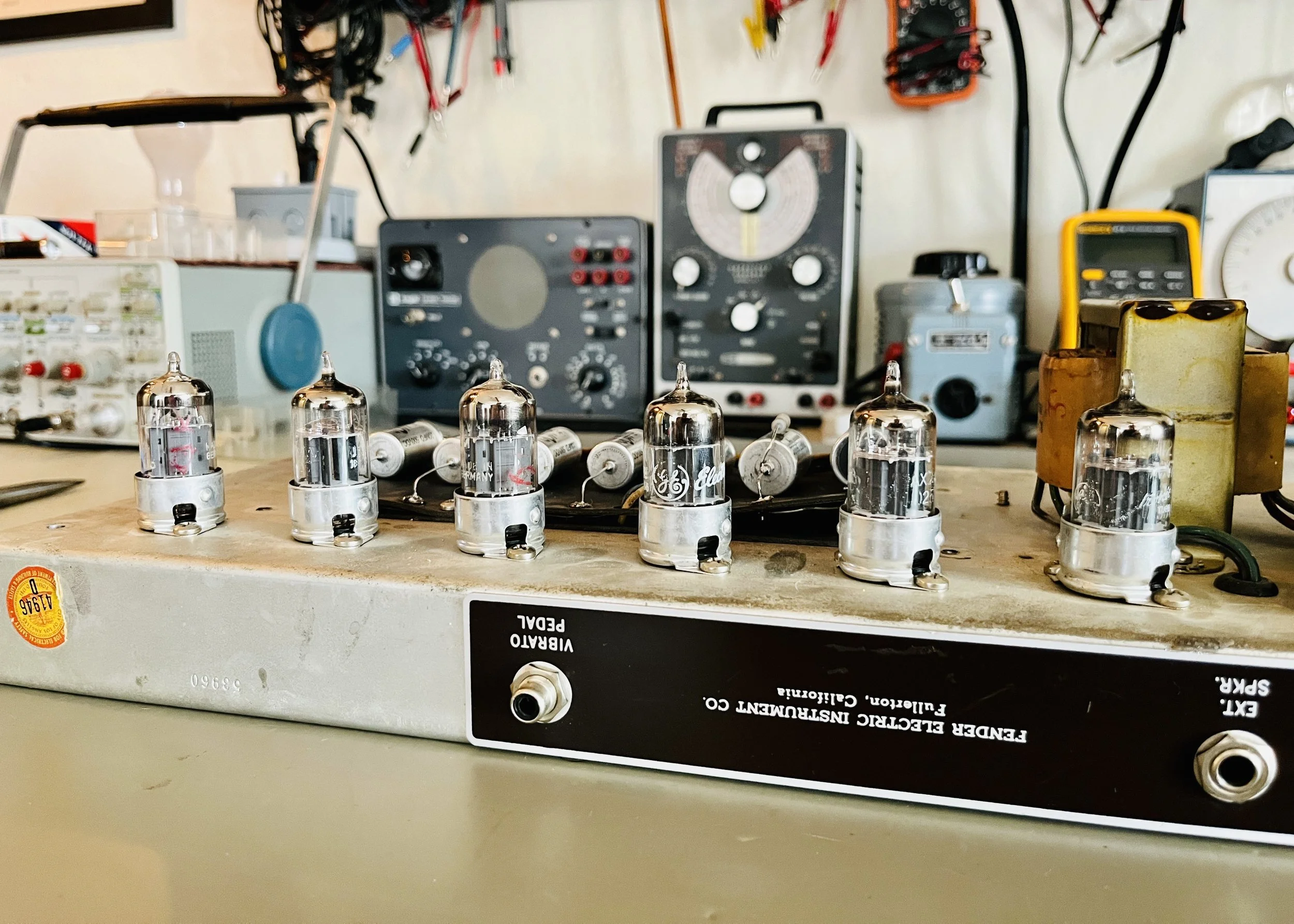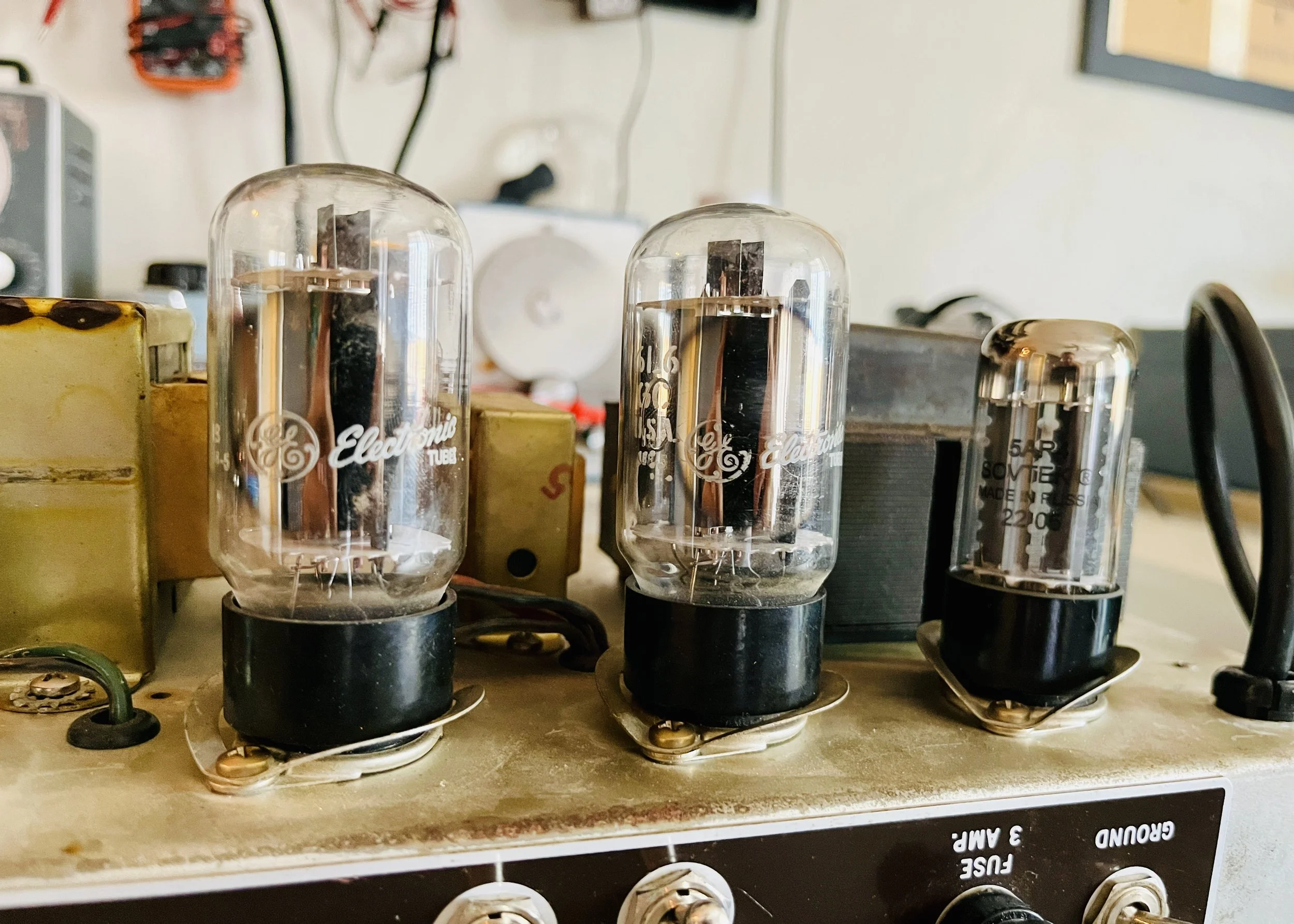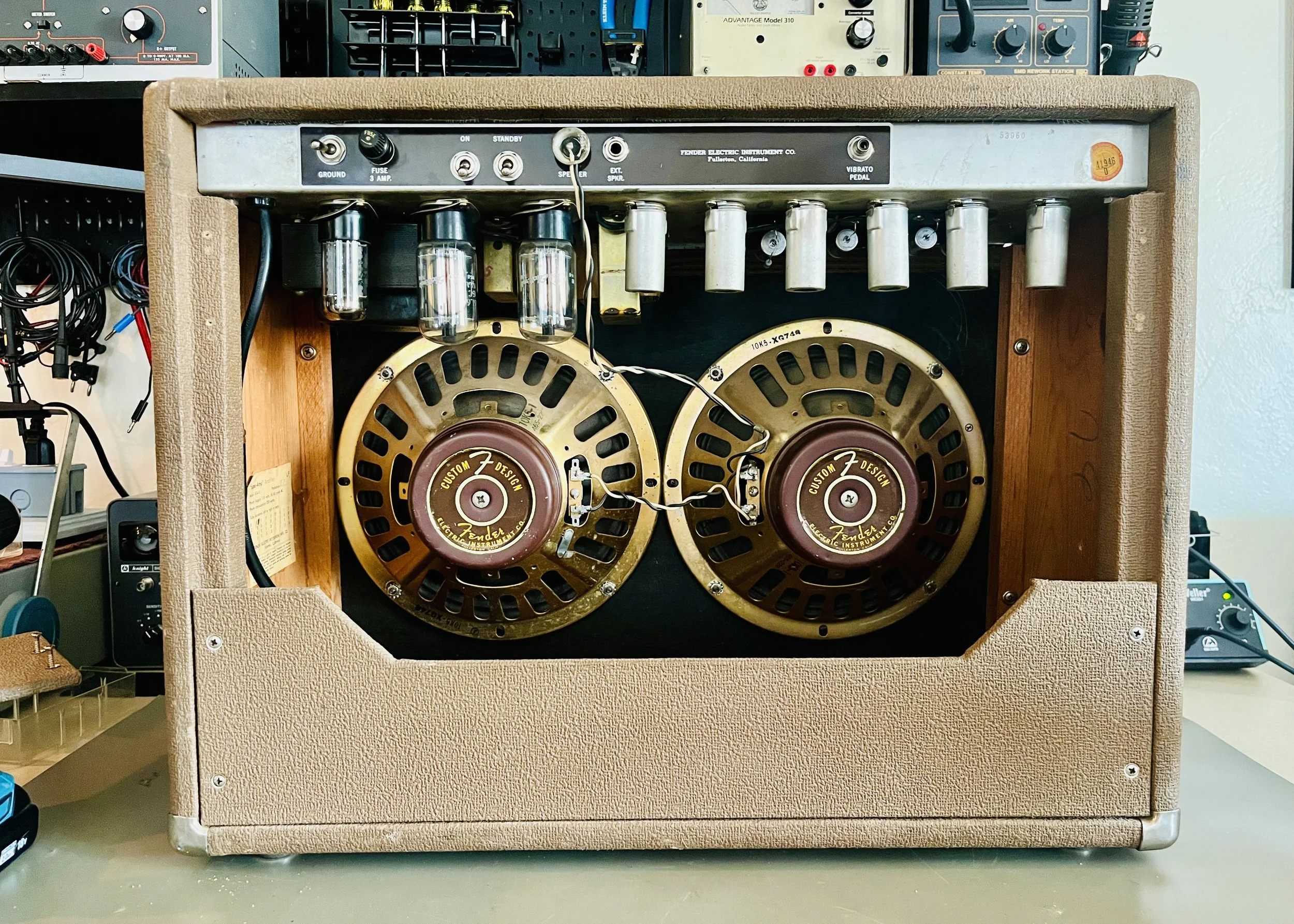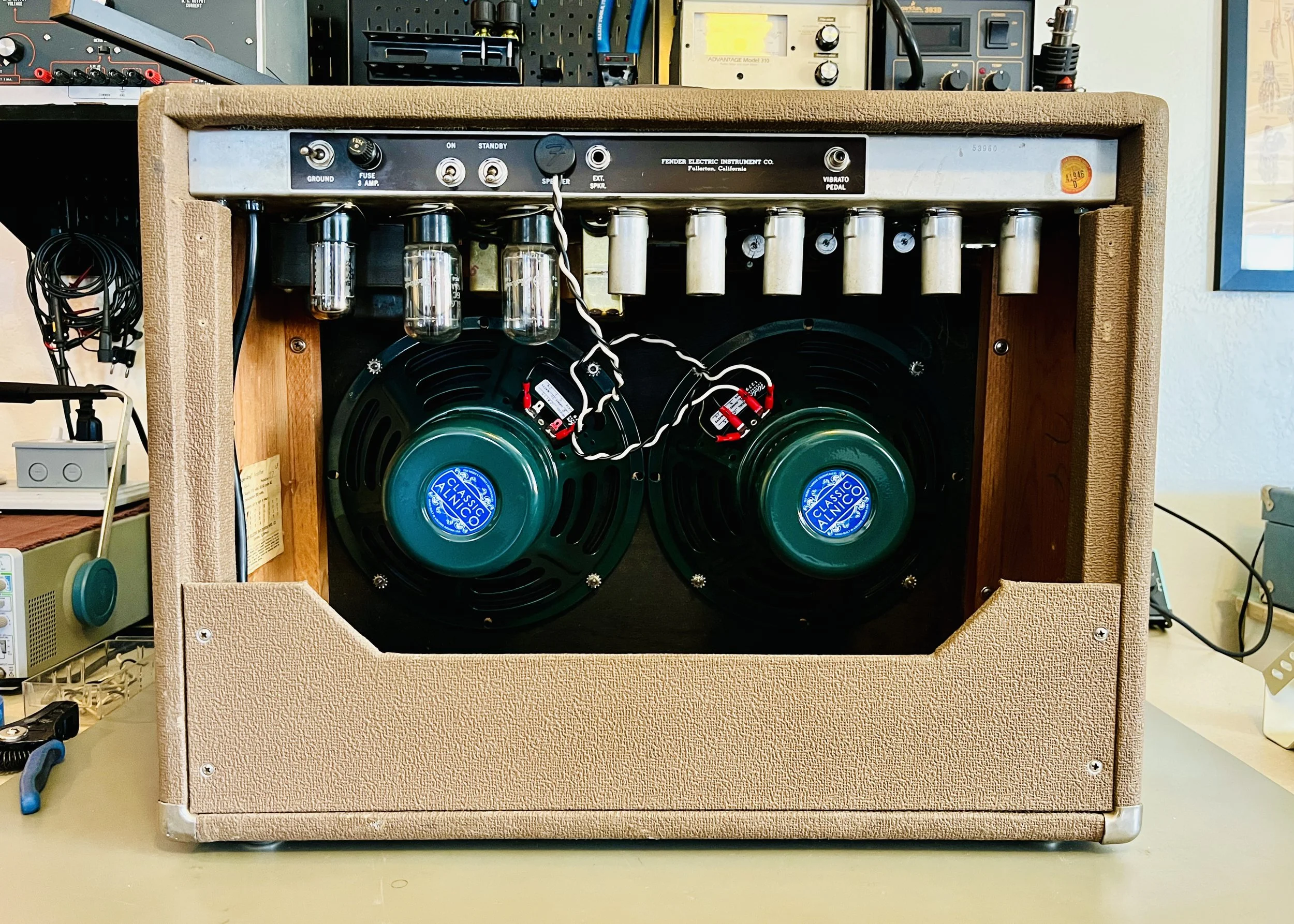1962 Fender Super-Amp
The short-lived Brown-Panel/Blonde era of Fender amps were produced from 1959 through 1963. They are often considered tonally right in-between the more famous Tweed and Black-Panel circuits we are all familiar with. The Brown/Blonde era was the first time Tolex would be applied to Fender amps, and cosmetically appearing closer to the often re-issued Black-Panel and Silver-Panel models. The changes to the circuitry included the move to cleaner more hi-fi sounding tone, two preamp channels with individual tone stacks, Fixed Bias output stages, Long-Tailed Pair Phase Inverters, and the increased use of Negative Feedback. In 1946 this amp started off it’s model run named the Dual Professional, then in 1947 it was changed to the Super-Amp, it had 20 Watts of power and 2 x 10” speakers. This Brown-Panel 6G4-A Fender Super-Amp comes in at 40 Watts RMS, 5881 or 6L6GC power tubes, has 2 x 10” Jensen branded speakers, two-knob Treble/Bass tone controls per channel, and the rare and hypnotizing Harmonic Tremolo. Harmonic Tremolo sounds like a mix between a Phaser and your traditional Fender style Tremolo heard in most 50’s, 60’s, and 70’s Fender models. It is an amazing sounding effect, but it did not last long in Fender’s catalog because of the complexity of the circuit. It takes three separate 12AX7 tubes to create the effect and had a high parts count along with it. Essentially it modulates each half of the guitar signal through a high-pass and low-pass filter creating both Phase Modulation and Amplitude Modulation at the same time. It can only be found in Brown-Panel or Blonde Vibrasonic, Bandmaster, Super, Pro, Concert, Twin, and Showman amps made between 1959 and 1963. The final straw for Fender’s production of the Harmonic Tremolo effect was when they realized they could fit both Optical Tremolo, and more importantly Spring Reverb, into the same chassis/eyelet board space while using the same amount of tubes and essentially the same parts count. Fender correctly believed that the Spring Reverb effect would be the big seller for their next lineup and that guitarists wouldn’t mind the change to the fantastic sounding, but slightly less magical Opto-Coupler driven Trem circuit. Optical Tremolo became the mainstay for Fender’s lineup through the 60’s and 70’s, with a couple of the smaller wattage amps like the Princeton and Vibro Champ retaining the tweed-era Bias Modulating Tremolo effect. Notable users include: Tommy Tedesco, on his many sessions as part of The Wrecking Crew out of L.A.
This amp came in to my shop having had been worked on in the past. The amp already had a partial cap job, re-tube, and plate resistor replacement, but the quality of the work was poor and the cap job was already four decades old. The electrolytics were leaking caustic paste, the amp had noise issues, the rectifier tube was the wrong model, and one of the speakers was blown. This one needed a full restoration including a complete electrolytic cap job, new power/misc. resistors, cleaning, new AC cord, coupling cap replacement, a new rectifier tube, and new speakers.
All filter/bias/bypass caps were replaced with upgraded voltage and temperature rated MOD/Vishay brand electrolytic’s. The initial two electrolytics in the filter and standby circuits were replaced with two MOD brand 70uf 350v units and two 220k 2 Watt Metal Oxide Resistors in a balanced series topology. This was done in order to deal with the high voltage (approx. 530VDC) during standby. Originally the amp was made with caps that had 525VDC max ratings, but current electrolytics top out at 500VDC so the first filter stage had to be modified to account for this. This stage now can accommodate the standby voltage with a combined circuit capacitance of 35uf at 700VDC max voltage - as close as possible to the original 40uf parallel circuit spec. This slight modification has to be done on many Tweed and Brown-Panel Fender amps for safety especially because modern wall voltages have risen from 115VAC to 120VAC+.
New 2 Watt Metal Oxide power dropping resistors were installed for better reliability and lower noise floor. All non-Tremolo circuit preamp plate resistors were replaced with 2 Watt Reduced Mass Metal Film type units for preventative maintenance and reliability. All screen resistors were replaced with 3 Watt Cement 470 ohm type units for same reasoning. Two .1uf 500v SOZO brand film capacitors were used for the phase inverter circuit to keep the tone as close as possible to the original "Blue Molded" coupling caps. One of the AC shunt film capacitors in the Harmonic Tremolo circuit (.1uf 200v unit connected to lug 3 of the Intensity pot) was changed out to a Vishay brand unit with double the capacitance (.22uf 400v) in order to get rid of an obtrusive thumping type noise. This thumping/motor-boating noise is commonly found in Brown-Panel amps with this type of Tremolo - it was a problem that plagued Fender during manufacturing and new amps often had issues right off the factory floor. The original Vibrato Channel 1/4” input jack had loose contact and was making noise, it was replaced with a Switchcraft brand replica. A new 3 Prong AC cord was installed to replace old and worn unit present.
The customer wanted the speakers changed to a model that was the most historically accurate to the original Oxford brand 10” Alnico type units. Two new Weber 10A125 10" Alnico speakers (8 Ohm, 30 Watt, Light Dope, Standard Dust Cap) were installed. This is Weber's take on the early 1960's Jensen P10Q/Oxford 10K5 - an extremely close and high quality reproduction. All new speaker wiring/harness and F-Cap 1/4” plug were installed as well.
The original tubes almost all tested good, but the rectifier tube was not the correct model and was replaced. V1-V2 = Siemens ECC83, V3-V6 = GE 12AX7, V7-V8 = GE 6L6GC Matched Pair, V9 = SOVTEK 5AR4/GZ34. These tubes were picked for best tone, and reliability. The 6L6GC’s Fixed Bias was set to %53 Class AB Plate Dissipation with a B+ of 483VDC. New chassis straps, with associated screws and nuts were installed as the originals were bent, rusted, and stripped. The tube sockets were all treated with De-Oxit to remove/prevent corrosion. The pots were sprayed out and the amp was cleaned inside and out. Amp sounds and works great.


